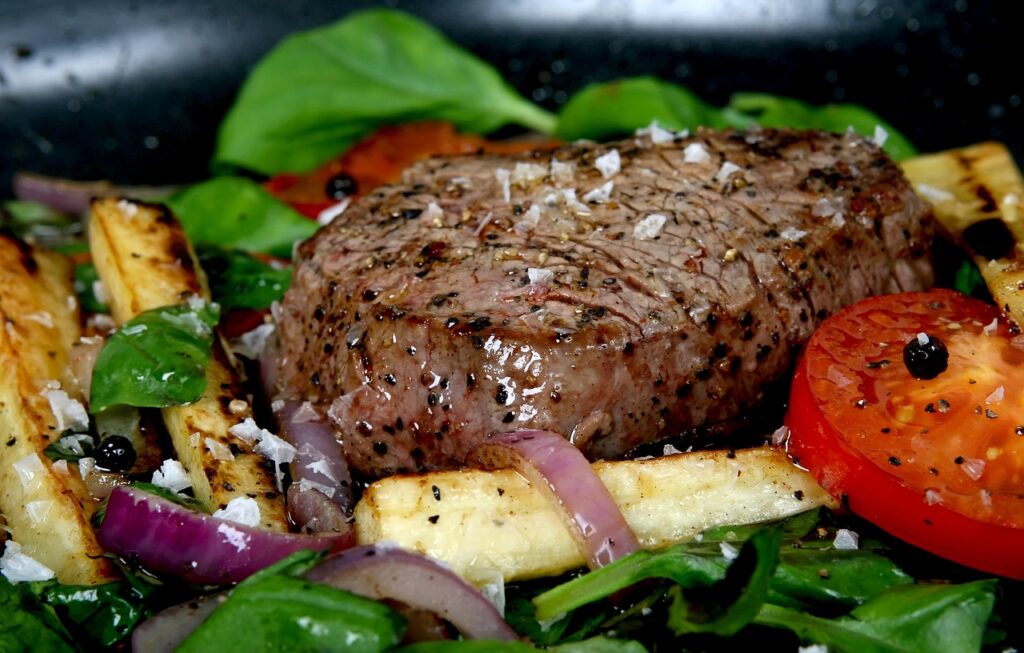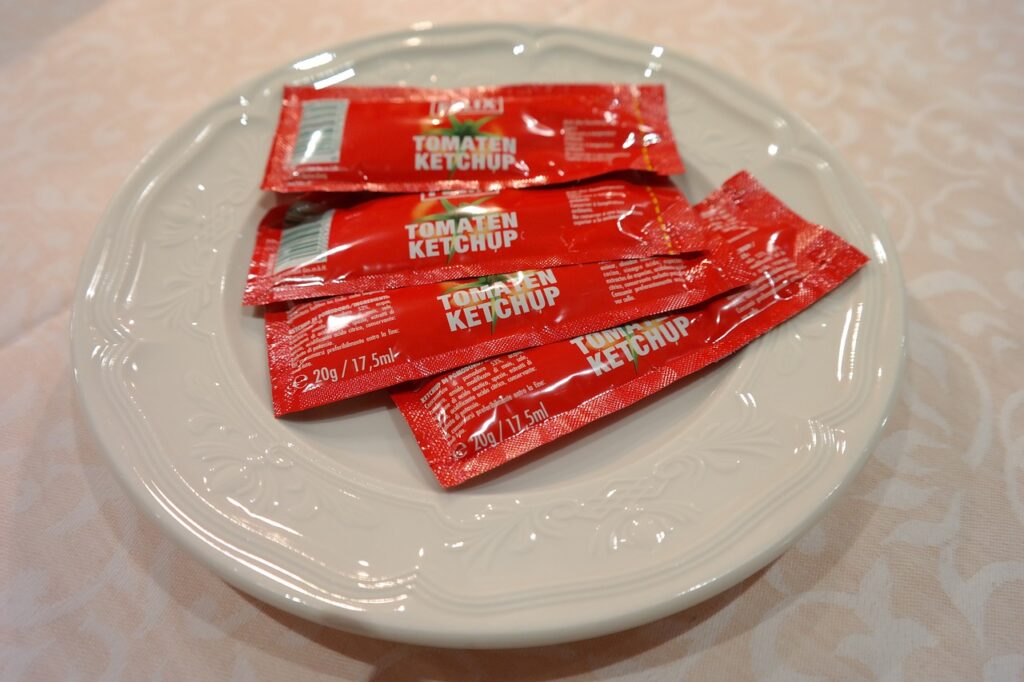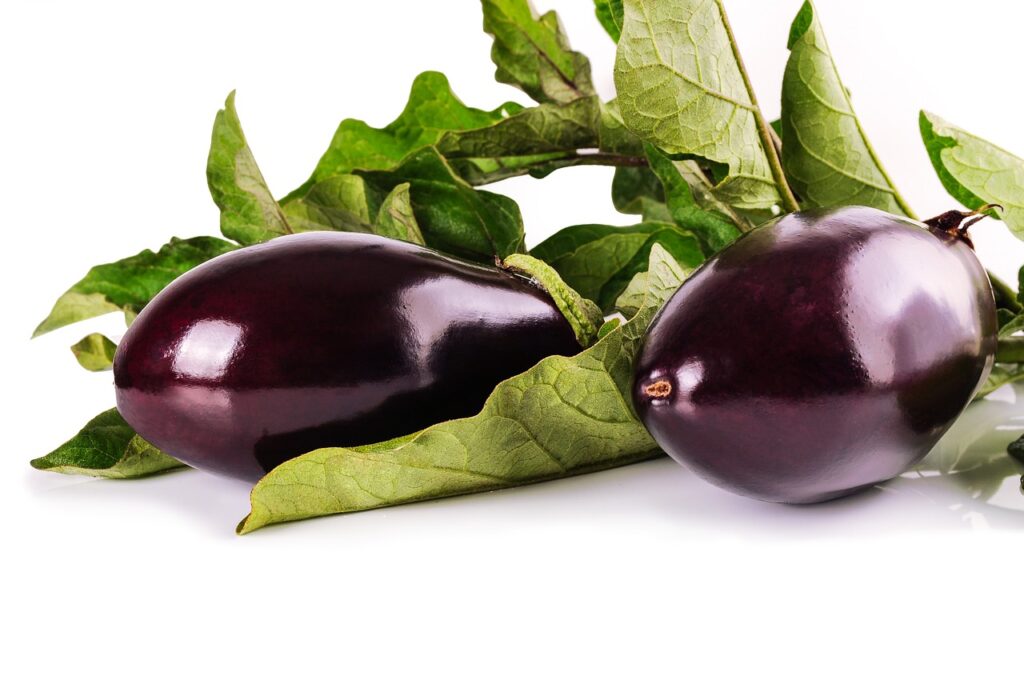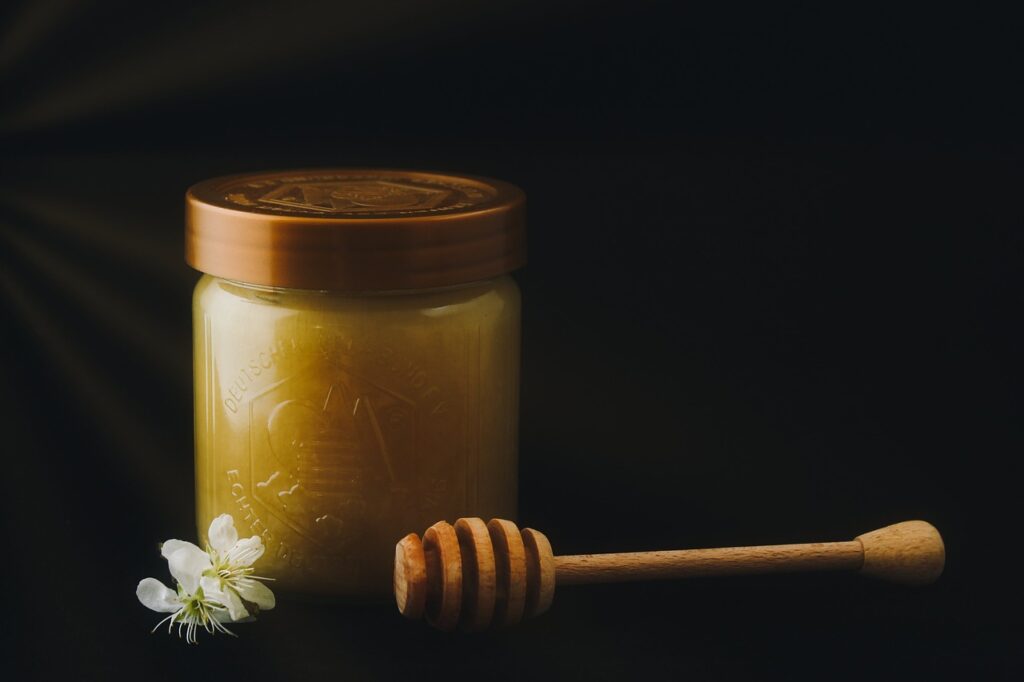Are you tired of feeling sluggish and bloated after consuming traditional grains?
Well, fear not, because there are some healthy low-carb grain alternatives out there that can satisfy your cravings without leaving you feeling weighed down.
But what are these magical alternatives, you ask?
Stay tuned, because we are about to reveal some surprising options that might just change the way you think about grains.
Cauliflower Rice
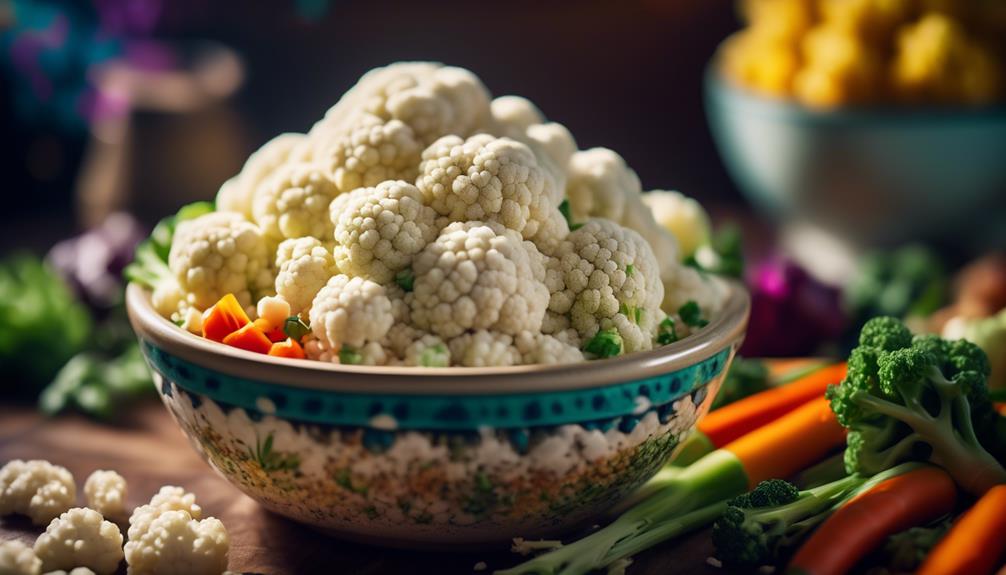
Cauliflower rice is a versatile and nutritious low-carb alternative to traditional grains. It's made by finely chopping or grating cauliflower florets to resemble rice grains. This low-calorie substitute is gaining popularity due to its numerous health benefits and adaptability in various dishes.
Cooking techniques for cauliflower rice are simple and quick. You can sauté it in a pan with a little oil or butter until it becomes tender, which takes about 5-7 minutes. Another option is steaming it for 5-8 minutes until it's soft. Alternatively, you can microwave it for 3-4 minutes. These cooking methods preserve the texture and flavor of the cauliflower rice.
In addition to being low in carbs and calories, cauliflower rice is rich in vitamins C, K, and B6. It's also a good source of fiber, providing satiety and aiding in digestion. Furthermore, it contains compounds like sulforaphane and indole-3-carbinol, which have been associated with potential anti-cancer properties.
Cauliflower rice is a versatile ingredient that can be used in many dishes, such as stir-fries, salads, and even as a substitute for traditional rice in sushi rolls. Its mild flavor allows it to absorb the taste of other ingredients, making it an excellent base for various cuisines.
Zucchini Noodles
To continue exploring low-carb grain alternatives, let's now turn our attention to zucchini noodles, a nutritious and versatile option for those seeking a healthier alternative to traditional pasta.
Zucchini noodles, also known as zoodles, are made by using zucchini spiralizers to create long, thin strands that resemble spaghetti.
Here are three reasons why zucchini noodles are a great addition to your low-carb diet:
- Low in Carbs: Unlike regular pasta, zucchini noodles are extremely low in carbohydrates. One cup of zucchini noodles contains only about 7 grams of carbs, while the same amount of regular pasta can have upwards of 40 grams. This makes zucchini noodles a perfect choice for those following a low-carb or keto diet.
- Nutrient-rich: Zucchini noodles are packed with important nutrients like vitamin C, vitamin A, potassium, and fiber. These nutrients help support a healthy immune system, boost eye health, and aid in digestion. Incorporating zucchini noodles into your meals can help you increase your nutrient intake while keeping your carb intake low.
- Versatile and Easy to Prepare: Zucchini noodles can be used in a variety of dishes, from stir-fries to salads and even as a pasta substitute in traditional Italian recipes. There are countless zucchini pasta recipes available online that cater to different tastes and dietary preferences.
Spaghetti Squash

Spaghetti squash is a low-carb grain alternative that offers numerous nutritional benefits. Packed with vitamins, minerals, and fiber, it's a healthy choice for those looking to cut down on carbs.
With its mild flavor and versatile texture, spaghetti squash can be cooked in various ways, making it a delicious and satisfying substitute for traditional pasta dishes.
Nutritional Benefits
Packed with essential vitamins and minerals, spaghetti squash offers a nutritious and low-carb alternative to traditional grains. Here are three health advantages of incorporating spaghetti squash into your diet:
- Weight management: With only 42 calories per cup, spaghetti squash is a great option for those looking to shed some pounds. Its high water content and low calorie count make it a filling choice without compromising on nutrition.
- Nutrient-rich: Spaghetti squash is packed with vitamins and minerals such as vitamin C, vitamin A, potassium, and calcium. These nutrients contribute to a strong immune system, healthy vision, and bone health.
- Blood sugar control: Due to its low carbohydrate content, spaghetti squash has a minimal impact on blood sugar levels. This makes it an excellent choice for individuals with diabetes or those looking to manage their blood sugar levels.
With its versatility and health benefits, spaghetti squash is a fantastic addition to your low-carb diet.
Cooking Methods
If you're ready to incorporate spaghetti squash into your low-carb diet, let's explore some delicious cooking methods to bring out its flavors and textures.
Spaghetti squash can be cooked using various techniques, including roasting, boiling, and microwaving.
Roasting is a popular method that enhances the natural sweetness of the squash. To do this, simply halve the squash, remove the seeds, and roast it in the oven until tender.
Boiling is another option, where you can cook the squash in a pot of boiling water until it becomes tender.
Alternatively, you can microwave the squash by piercing it with a fork and cooking it for around 10 minutes.
Once cooked, you can use spaghetti squash as a low-carb alternative to pasta and pair it with your favorite sauces.
It's a versatile ingredient that can be used in stir-fries, salads, or even made into a delicious spaghetti squash casserole.
Flavor and Versatility
To enhance the flavor and versatility of spaghetti squash, there are various cooking methods that can be used to bring out its natural sweetness and create a low-carb alternative to pasta. Here are three ways you can elevate the flavor profile of spaghetti squash:
- Roasting: Cut the squash in half lengthwise, remove the seeds, and brush the flesh with olive oil. Roast in the oven at 400°F for 40-50 minutes until tender. The caramelization that occurs during roasting enhances the sweetness of the squash.
- Sautéing: Cut the squash into thin strands using a spiralizer or julienne peeler. Heat some olive oil in a skillet and sauté the squash until it becomes tender, about 5-7 minutes. Add your favorite seasonings, such as garlic, herbs, or spices, to infuse the squash with flavor.
- Stuffing: Cut the squash in half lengthwise, remove the seeds, and roast as mentioned earlier. Once cooked, use a fork to scrape out the flesh and create a cavity. Fill the cavity with a delicious mixture of cooked vegetables, protein, and cheese. Bake until the filling is heated through and the cheese is melted and bubbly.
Experiment with these cooking methods and incorporate them into your favorite recipe ideas to enjoy the versatility of spaghetti squash as a healthy low-carb grain alternative.
Shirataki Noodles
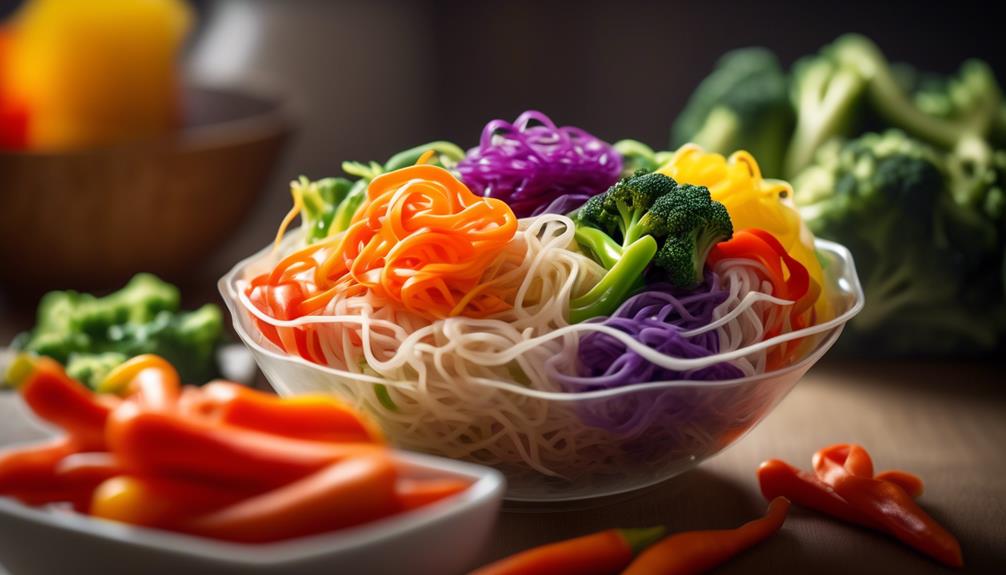
Shirataki noodles are an excellent low-carb grain alternative that can be a valuable addition to your diet. These noodles are made from the konjac plant, which is rich in dietary fiber and low in calories.
With their unique texture and neutral taste, they can be prepared in various ways to suit your preferences and make a satisfying, low-carb meal.
Nutritional Benefits
With its low calorie and carbohydrate content, Shirataki noodles offer a nutritious and waistline-friendly alternative to traditional grain-based noodles. Here are some nutritional benefits of Shirataki noodles:
- Low in calories: Shirataki noodles are extremely low in calories, making them a great option for those looking to reduce their calorie intake. A typical serving of Shirataki noodles contains only about 20 calories.
- High in fiber: These noodles are rich in soluble fiber, which can help promote feelings of fullness and aid in digestion. A serving of Shirataki noodles can provide up to 3 grams of fiber.
- Gluten-free and low in carbs: Shirataki noodles are made from the konjac plant, which is naturally gluten-free and low in carbs. This makes them a suitable choice for individuals with celiac disease or those following a low-carb diet.
Incorporating Shirataki noodles into your meals can't only help you cut down on calories and carbs but also provide you with additional health benefits such as improved digestion and increased satiety.
Cooking and Preparation
Now let's explore how to cook and prepare Shirataki noodles, the low-carb grain alternative that offers numerous nutritional benefits.
Cooking Shirataki noodles is simple and quick. Start by rinsing the noodles thoroughly under cold water to remove any unpleasant odor. Then, boil them for 2-3 minutes to improve their texture. Once boiled, drain the noodles and pat them dry with a clean towel.
You can now use them in various dishes. Shirataki noodles are incredibly versatile and can be used in stir-fries, soups, salads, and even as a substitute for pasta. Try tossing them with your favorite sauce or adding them to a vegetable-based broth for a satisfying meal. With their neutral taste, Shirataki noodles can easily absorb the flavors of the ingredients they're paired with.
Almond Flour
Almond flour is a versatile and nutritious alternative to traditional grain flours. Made from finely ground almonds, it offers a unique flavor and texture that can enhance a variety of dishes.
Here are three reasons why almond flour is a great choice for low-carb cooking:
- Low in carbs, high in nutrients: Almond flour is naturally low in carbohydrates, making it an excellent option for those following a low-carb or keto diet. It's also a good source of protein, healthy fats, vitamin E, and magnesium, providing essential nutrients while keeping carb intake in check.
- Gluten-free and grain-free: Almond flour is naturally gluten-free and grain-free, making it a suitable choice for those with gluten sensitivities or following a grain-free diet. It can be used as a substitute for wheat flour in a wide range of recipes, including pancakes, muffins, and cookies.
- Versatile and easy to use: Almond flour can be used in a variety of dishes, from savory to sweet. It adds a rich, nutty flavor to baked goods and can be used as a coating for meats or as a thickener for sauces and soups. With so many almond flour recipes available, you can enjoy your favorite dishes while keeping your carb intake low.
Coconut Flour
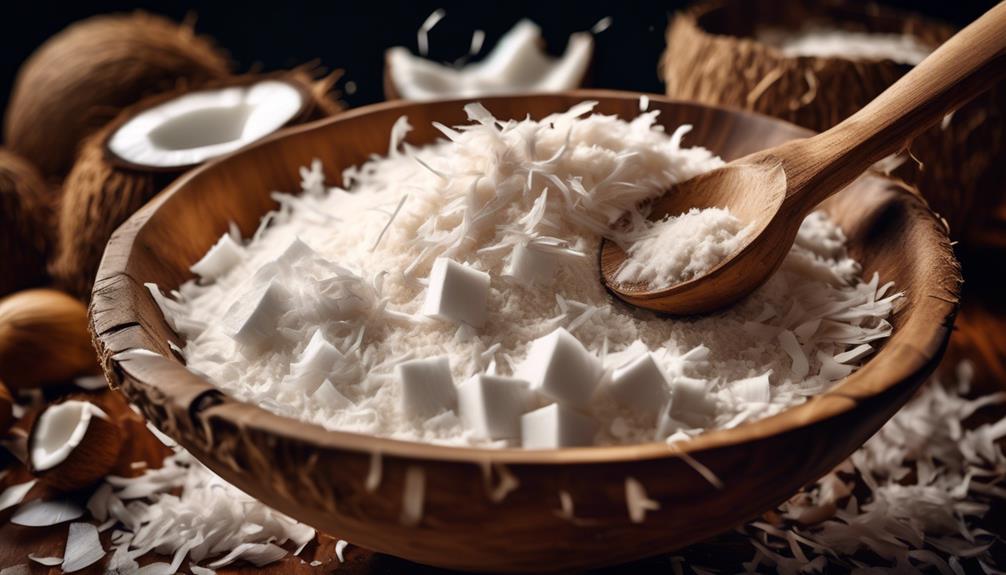
Coconut flour is a low-carb grain alternative that offers several nutritional benefits. It's high in fiber, protein, and healthy fats, making it a great option for those following a low-carb diet.
Additionally, coconut flour is naturally gluten-free and has a low glycemic index, making it suitable for individuals with gluten sensitivities or diabetes.
When baking with coconut flour, it's important to note that its high fiber content requires additional liquids and eggs to maintain the right texture and moisture in baked goods.
Nutritional Benefits
With its high fiber content and low glycemic index, coconut flour is a nutritious alternative to traditional grain-based flours. Here are three nutritional benefits of coconut flour:
- Rich in fiber:
Coconut flour contains a significant amount of dietary fiber, which promotes healthy digestion and helps maintain stable blood sugar levels. Consuming fiber-rich foods like coconut flour can also aid in weight management and reduce the risk of chronic diseases such as heart disease and diabetes.
- Packed with protein:
Coconut flour is a good source of plant-based protein, making it an excellent choice for individuals following a vegetarian or vegan diet. Protein is essential for building and repairing tissues, supporting immune function, and maintaining healthy hair, skin, and nails.
- High in healthy fats:
Coconut flour is naturally high in healthy fats, including medium-chain triglycerides (MCTs). MCTs are quickly absorbed by the body and provide a readily available source of energy. They've also been associated with numerous health benefits, such as improved brain function and increased fat burning.
To incorporate coconut flour into your cooking, you can use it as a substitute for traditional flours in baking recipes, or as a thickening agent in soups and sauces.
Baking Tips
To achieve the best results when baking with coconut flour, follow these helpful tips.
Coconut flour is known for its high fiber content and low carbohydrate profile, making it a popular choice for those following a low-carb or gluten-free diet. When using coconut flour in baking, it's important to remember that it absorbs a lot of liquid and has a unique texture.
To compensate for this, you can increase the number of eggs in your recipe or add additional liquid such as milk or water. It's also advised to sift the coconut flour before using it to remove any lumps and ensure an even texture.
Additionally, coconut flour tends to result in denser baked goods, so it's recommended to add a leavening agent such as baking powder or baking soda to help with rising.
Chia Seeds
Chia seeds are a nutritious and versatile low-carb grain alternative that can be easily incorporated into your diet. These tiny seeds pack a powerful nutritional punch and offer a wide range of health benefits.
Here are three reasons why you should consider adding chia seeds to your cooking repertoire:
- Cooking Techniques: Chia seeds can be used in various ways in the kitchen. They can be soaked in water or milk to create a gel-like consistency, which makes them an excellent egg substitute in baking. You can also sprinkle them on top of salads, yogurt, or oatmeal for added texture and crunch. Additionally, chia seeds can be ground into a powder and used as a thickening agent in soups, sauces, and smoothies.
- Health Benefits: Chia seeds are rich in fiber, omega-3 fatty acids, and antioxidants. Consuming chia seeds can help improve digestion, regulate blood sugar levels, and promote heart health. These tiny seeds are also a good source of protein and can help keep you feeling full and satisfied throughout the day. Furthermore, chia seeds are gluten-free, making them suitable for those with gluten sensitivities or celiac disease.
- Versatility: Chia seeds have a mild, nutty flavor that complements a wide range of dishes. You can use them in both sweet and savory recipes, making them a versatile ingredient in your kitchen. Whether you're making baked goods, smoothies, or savory dishes like meatballs or burgers, chia seeds can add a nutritional boost without compromising taste.
Incorporating chia seeds into your diet is a simple and effective way to enhance your overall health and wellness. So why not give them a try and enjoy the numerous benefits they have to offer?
Flaxseed Meal
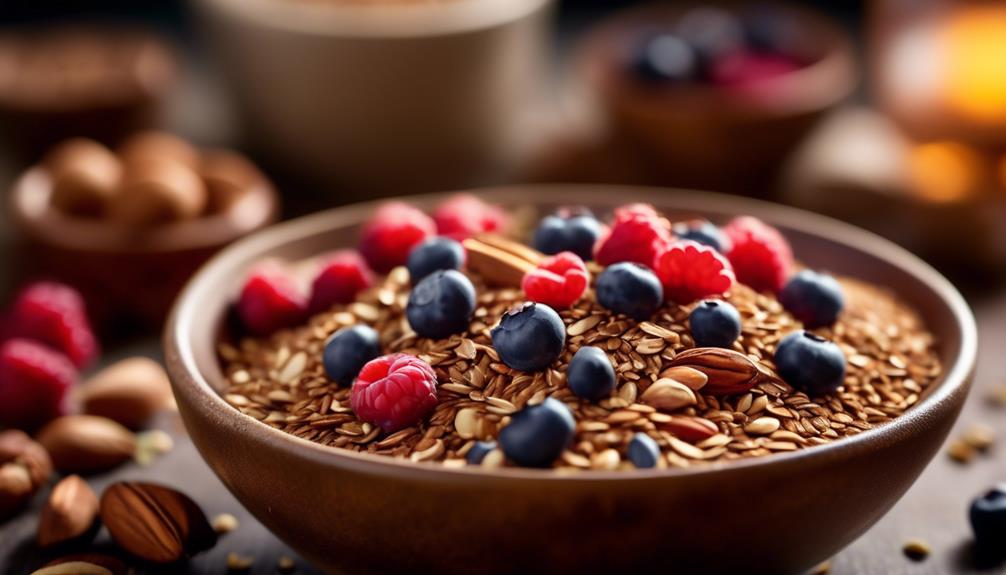
If you're looking for another low-carb grain alternative to add to your repertoire, consider incorporating flaxseed meal into your cooking.
Flaxseed meal is made from ground flaxseeds and is rich in nutritional properties and health benefits.
Flaxseed meal is an excellent source of dietary fiber, containing both soluble and insoluble fibers. This can help promote a healthy digestive system and regulate bowel movements. Additionally, the soluble fiber in flaxseed meal can help lower cholesterol levels and improve heart health.
One of the key nutritional properties of flaxseed meal is its high omega-3 fatty acid content. Omega-3 fatty acids are essential fats that play a vital role in brain health, reducing inflammation, and supporting heart health. Incorporating flaxseed meal into your diet can help increase your intake of these beneficial fats.
Flaxseed meal is also a good source of protein, making it a great addition to vegetarian or vegan diets. Protein is essential for building and repairing tissues, and it can help you feel fuller for longer.
To reap the health benefits of flaxseed meal, you can easily incorporate it into your meals. Add it to smoothies, yogurt, oatmeal, or use it as a substitute for eggs in baking recipes. Just remember that flaxseed meal is best stored in the refrigerator to maintain its freshness.
Hemp Hearts
Hemp hearts, also known as hemp seeds, are a nutritious and versatile grain alternative that can be easily incorporated into your diet. These tiny seeds pack a powerful nutritional punch and offer a range of health benefits.
Here are three reasons why you should consider adding hemp hearts to your low-carb meal plan:
- Rich in essential nutrients: Hemp hearts are a great source of protein, healthy fats, and fiber. They're also rich in vitamins and minerals, including magnesium, iron, and zinc. Incorporating hemp hearts into your diet can help support your overall health and well-being.
- Heart-healthy benefits: The omega-3 and omega-6 fatty acids found in hemp hearts have been shown to promote heart health. These essential fatty acids may help reduce inflammation, improve cholesterol levels, and lower the risk of heart disease.
- Versatile and delicious: Hemp hearts can be used in a variety of recipes, making them a versatile addition to your low-carb meal plan. You can sprinkle them on top of salads, blend them into smoothies, or use them as a topping for yogurt or oatmeal. Their mild, nutty flavor adds a delicious touch to any dish.
Incorporating hemp hearts into your low-carb diet can provide numerous health benefits while adding a delicious and nutritious element to your meals. Try experimenting with different hemp heart recipes to discover new and exciting ways to enjoy this grain alternative.
Quinoa
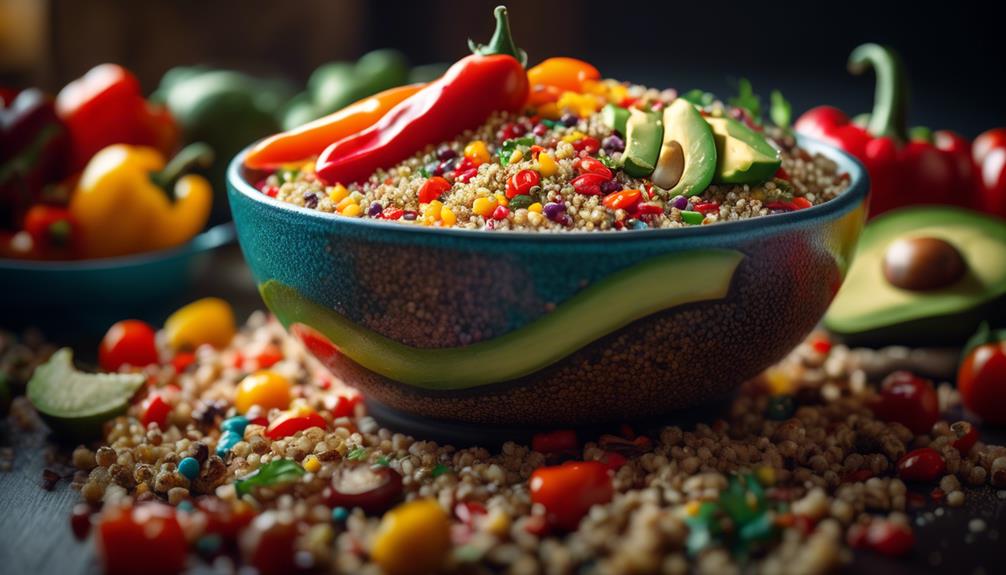
Quinoa offers numerous nutritional benefits, making it a great addition to your low-carb diet. Packed with protein, fiber, and essential minerals, such as magnesium and iron, quinoa can help you meet your daily nutrient requirements.
Additionally, quinoa is incredibly versatile and can be used in various dishes, from salads to stir-fries, providing you with a tasty and nutritious alternative to traditional grains.
Nutritional Benefits of Quinoa
Quinoa, a nutritious grain alternative, offers a wide range of health benefits. Here are three reasons why you should consider incorporating quinoa into your diet:
- High in protein: Quinoa is a great source of plant-based protein, making it an excellent choice for vegetarians and vegans. It contains all nine essential amino acids, making it a complete protein source.
- Versatile cooking techniques: Quinoa can be cooked in various ways, including boiling, steaming, or even using as a base for salads. Its versatility allows you to experiment with different flavors and textures.
- Nutrient-rich: Quinoa is packed with essential nutrients like fiber, magnesium, iron, and vitamin B. It's also gluten-free, making it suitable for individuals with gluten sensitivities or celiac disease.
Incorporating quinoa into your meals not only adds a delicious and nutty flavor but also provides your body with essential nutrients and protein.
Cooking Methods for Quinoa
One popular cooking method for quinoa is boiling it in water or broth. This technique is simple and allows the quinoa to absorb the liquid and become tender.
To cook quinoa, start by rinsing it thoroughly to remove any bitter coating. Then, add one part quinoa to two parts liquid in a saucepan and bring it to a boil. Reduce the heat, cover the pan, and let it simmer for about 15 minutes or until the liquid is absorbed. Fluff the quinoa with a fork before serving.
You can also try other cooking techniques like steaming or using a rice cooker for convenience.
Quinoa is versatile and can be used in various recipes such as salads, stir-fries, or pilafs. Experiment with different flavors and ingredients to create delicious and nutritious meals.
Quinoa as a Versatile Ingredient
With its versatility and numerous health benefits, incorporating quinoa into your meals can add a nutritious and flavorful twist. Here's why you should consider adding this grain alternative to your diet:
- Cooking Techniques: Quinoa can be cooked using various methods, such as boiling, steaming, or even toasting. Each technique brings out different flavors and textures, allowing you to experiment and find your preferred cooking style.
- Health Benefits: Quinoa is a nutritional powerhouse. It's rich in protein, fiber, and essential amino acids, making it an excellent choice for vegetarians and vegans. Additionally, quinoa is gluten-free and has a low glycemic index, making it suitable for individuals with gluten intolerance or diabetes.
- Versatility: Quinoa can be used in a wide range of dishes, from salads and stir-fries to soups and baked goods. Its mild, nutty flavor pairs well with various ingredients, allowing you to create delicious and healthy meals.
Buckwheat
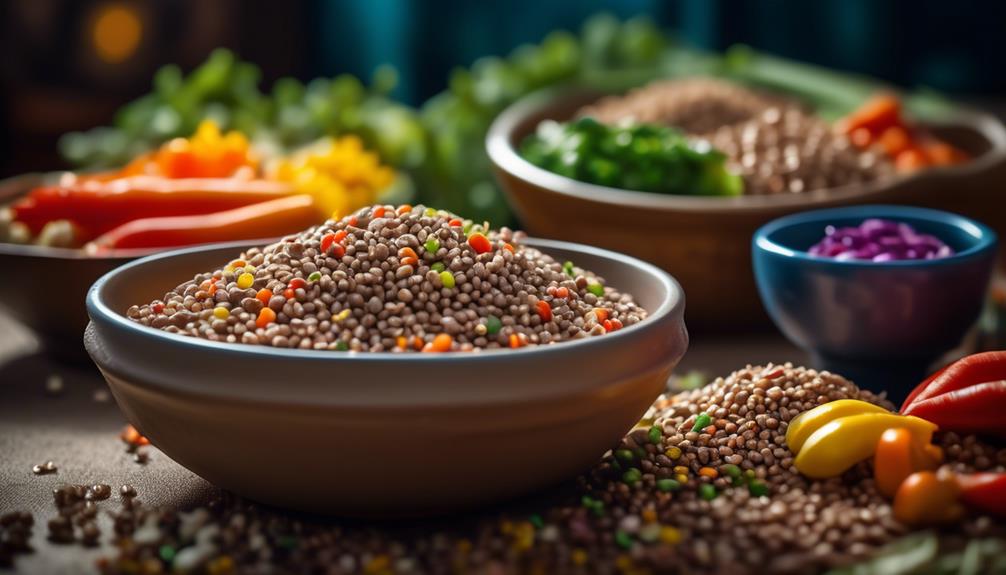
Buckwheat is a versatile and nutritious grain alternative that can be incorporated into a low-carb diet. This gluten-free grain is packed with essential nutrients and offers numerous health benefits. Buckwheat is a great option for those looking to reduce their carbohydrate intake while still enjoying a filling and satisfying meal.
One of the advantages of using buckwheat in your low-carb diet is the variety of delicious recipes you can create. From savory dishes like buckwheat stir-fry or buckwheat salad to sweet treats like buckwheat pancakes or buckwheat porridge, there are endless possibilities to explore. With its nutty flavor and unique texture, buckwheat adds depth and complexity to any dish.
In addition to its culinary versatility, buckwheat also boasts impressive health benefits. It's rich in fiber, which aids digestion and helps regulate blood sugar levels. Buckwheat is also a good source of protein, making it an excellent choice for vegetarians and vegans. Moreover, it contains essential minerals such as magnesium, manganese, and phosphorus.
Incorporating buckwheat into your low-carb diet can provide you with a wide range of nutrients while keeping your carbohydrate intake in check. So why not give this nutritious grain alternative a try and explore the many delicious buckwheat recipes available? Your taste buds and your health will thank you.
Green Lentils
Green lentils are a nutritious and versatile legume that can be a valuable addition to a low-carb diet. They offer several health benefits and can be prepared in various ways to suit your taste and preferences. Here are three reasons why green lentils are worth considering:
- High Nutritional Value: Green lentils are packed with essential nutrients. They're an excellent source of protein, fiber, iron, and folate. Protein is crucial for maintaining muscle mass and supporting overall health. Fiber aids in digestion and helps regulate blood sugar levels. Iron is essential for oxygen transport in the body, while folate is important for cell growth and development.
- Versatile Cooking Techniques: Green lentils can be cooked in different ways, allowing for variety in your meals. They can be boiled and used as a base for salads, soups, and stews. You can also cook them until they're tender and use them as a filling in wraps or as a side dish. Green lentils can even be sprouted and used in salads or sandwiches for added texture and flavor.
- Low Carb Content: One of the advantages of green lentils is their low carbohydrate content. With only around 40 grams of carbohydrates per 100 grams, they can be a suitable option for those following a low-carb diet. Additionally, their high fiber content can help slow down the absorption of carbohydrates, keeping you feeling fuller for longer.
Including green lentils in your low-carb diet can provide you with essential nutrients while adding variety to your meals. Try experimenting with different cooking techniques to find your favorite way to enjoy this nutritious legume.
Chickpea Flour
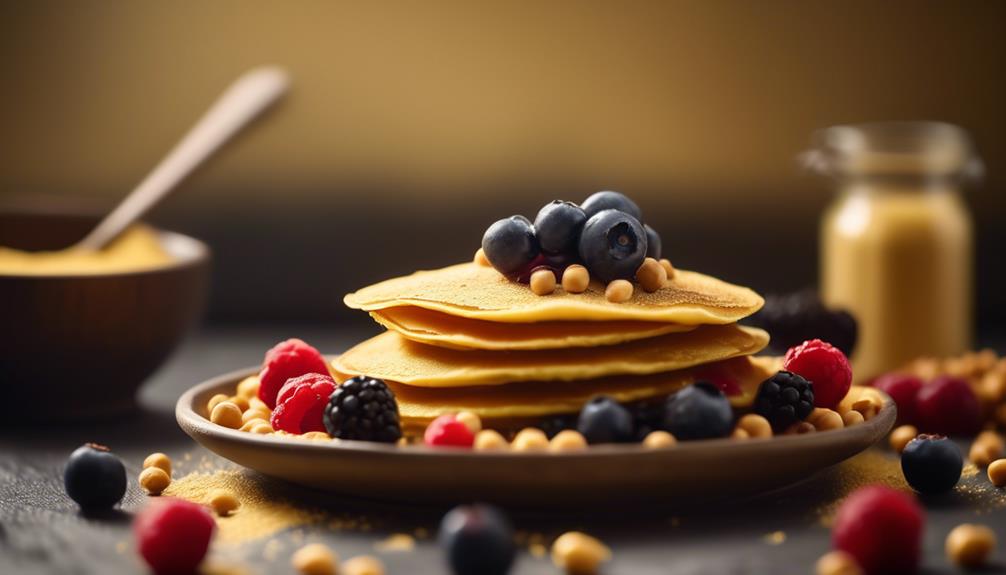
If you're looking for another low-carb grain alternative to add to your diet, consider incorporating chickpea flour. Chickpea flour, also known as gram flour or besan, is made from ground chickpeas and is a versatile ingredient in many cuisines. It isn't only low in carbohydrates but also packed with nutrients that can benefit your health.
One of the health benefits of chickpea flour is its high protein content. It's an excellent source of plant-based protein, making it a great choice for vegetarians and vegans. Protein is essential for building and repairing tissues, as well as supporting muscle growth and maintenance.
Chickpea flour is also rich in fiber, which can aid digestion and promote feelings of fullness. Fiber is known to help regulate blood sugar levels and support a healthy gut.
Incorporating chickpea flour into your diet is easy with a wide range of chickpea flour recipes available. You can use it to make delicious pancakes, bread, cookies, and even pizza crusts. It adds a nutty flavor and a slight denseness to baked goods, making them more satisfying.
Edamame
Edamame, a popular legume in Asian cuisine, offers a low-carb grain alternative that's both nutritious and delicious. Here are three reasons why you should consider incorporating edamame into your diet:
- Health benefits of edamame:
Edamame is packed with essential nutrients. It's a great source of plant-based protein, containing all nine essential amino acids. It's also rich in fiber, which aids digestion and helps maintain a healthy weight. Edamame is a good source of vitamins and minerals, including vitamin K, folate, and iron, which are important for bone health, red blood cell production, and energy metabolism.
- Edamame recipes:
There are numerous ways to enjoy edamame in your meals. You can steam or boil the pods and sprinkle them with a little sea salt for a simple and satisfying snack. Edamame can also be added to salads, stir-fries, or soups. You can even blend cooked edamame with garlic, lemon juice, and olive oil to make a creamy and nutritious dip.
- Easy to prepare:
One of the great things about edamame is how quick and easy it's to prepare. Simply boil or steam the pods for about 5 minutes until they're tender. Then, drain and rinse them under cold water. You can easily remove the beans from the pods by squeezing or popping them out with your fingers.
Incorporating edamame into your diet can provide you with a low-carb, nutrient-dense alternative to grains. With its health benefits and versatility in recipes, edamame is a fantastic addition to any meal plan.
Riced Broccoli
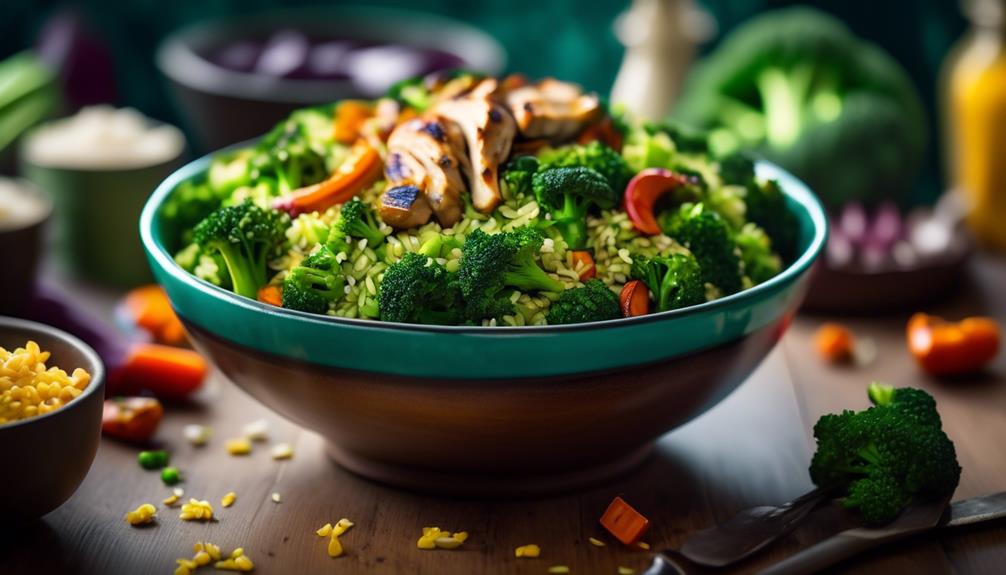
To continue exploring low-carb grain alternatives, let's now turn our attention to riced broccoli, a versatile and nutritious option for your meals. Riced broccoli is made by finely chopping or processing fresh broccoli florets into small, rice-like pieces. It's a fantastic substitute for traditional grains like rice or pasta, as it's low in carbs and high in nutrients.
When it comes to nutritional value, riced broccoli is a winner. It's packed with vitamins C and K, fiber, and antioxidants. These nutrients contribute to a healthy immune system, strong bones, and improved digestion. Additionally, riced broccoli is low in calories, making it a great choice for those looking to lose weight or maintain a healthy weight.
Cooking riced broccoli is quick and easy. You can steam it, sauté it, or even microwave it. It retains its crispness and bright green color when cooked, adding a fresh and vibrant element to your meals. It can be used as a base for stir-fries, added to soups or salads, or even used as a substitute for rice in dishes like fried rice or risotto.
Incorporating riced broccoli into your diet is a smart choice for those looking to reduce their carbohydrate intake while still enjoying a nutritious and satisfying meal. Its versatility and nutritional value make it a fantastic option to include in your low-carb grain alternatives.
Conclusion
In conclusion, incorporating healthy low-carb grain alternatives into your diet can be a flavorful and nutritious way to reduce your carbohydrate intake. From the versatile cauliflower rice to the satisfying zucchini noodles, there are plenty of options to choose from.
Remember to experiment with different alternatives and find the ones that suit your taste and dietary preferences. By making these swaps, you can enjoy a variety of delicious meals while maintaining a balanced, low-carb lifestyle.
So why not give it a whirl and savor the benefits of these grain substitutes?


